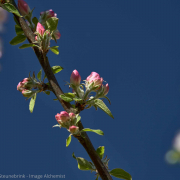Capture One White Balance
Capture One White Balance is your tool to create the right colors in your image. The tool is straightforward but the many options are often overlooked. Explore the features and controls and learn the smartest way to use the Capture One White Balance tool.

Capture One White Balance
With the Capture One White Balance tool, you simulate the color of the light the image was taken with. Capture One uses this information to interpret the color information and derive the correct colors from the RAW image data.
When you shoot RAW, the camera stores the white balance value in the metadata. This means that it is offered to the RAW software for interpretation. The white balance data is not processed in the RAW file. This is one of the major advantages of shooting RAW.
As a result, you can change the white balance of your RAW image in Capture One without any negative effect on image quality.
Looking at the anatomy of the tool you see two tabs, the Grey and Skin Tone tab. I will focus on the Grey tab for most of this blog and cover the Skin Tone tab at the end. Note that with Capture One Express (for Sony) you have no tabs and the Skin Tone option is missing.
Looking For Grey
The basic idea about adjusting the white balance is that a neutral area in the image has approximately the same values for the three channels Red, Green, and Blue.
This is obviously not always the case. Imagine a grey card lit during sunset. The color of the light has such a strong reddish cast, that even on a neutral surface there is redder and less blue. But nevertheless, the concept of equal values for all color channels still stands.
There are several ways to adjust the white balance. You can use either of the methods listed below or combine several to get the result you are after.
- Pick White Balance eyedropper
- Mode drop-down list
- Kelvin and Tint sliders
- Auto White Balance
- Preset
- (Local) Copy and Apply adjustments
The best method for you is determined by personal preferences, your workflow, images with similar light conditions, the time you can spend, and so on.
White Balance Picker
The Pick White Balance eyedropper is a cursor tool that relates to the White Balance tool. You can enable it from the tool, from the Toolbar or by pressing the W-key on your keyboard.
When you click in the image with the Pick White Balance eyedropper it will bring the values of the color channels Red, Green, and Blue together. So it is best to look for a grey or white area in your image. Avoid areas that are too bright or too dark to prevent that a channel is out of range (clipped).
Setting the white balance with the Pick White Balance eyedropper is a very common technique. It is fast and works best with a neutral area in your image and neutral-colored light (daylight or flash). A grey card or color card with a grey patch in the image is obviously your best bet.
Look at the lead image in this post, taken in the underground. The grey tiles on the floor are a good option for picking the white balance. Next, you can fine-tune with the Kelvin and Tint sliders, which I will discuss in a minute.
Mode Drop-Down List
A second method to quickly adjust the white balance in your image is the from Mode drop-down list. This list of predefined white balance settings and it mimics the list of white balance modes in your camera.
Capture One shows the option Shot when the white balance is not altered. The Kelvin and Tint values in the tool are taken from the metadata in the RAW file. Note that these are relative values, not absolute. Another RAW converter can show different values.
When you adjust the white balance the option turns to Custom. This is an indication that the white balance is altered in Capture One.
The Mode drop-down list is a good starting point for quickly adjusting your white balance, just like the eyedropper. Next, you can fine-tune with the Kelvin and Tint sliders.
Kelvin And Tint Sliders
This brings me to the main controls of the Capture One White Balance tool, the two sliders for Kelvin and Tint.
- Kelvin
a blue-yellow or cooler-warmer adjustment ranges from 800 to 14000K - Tint
a green-magenta adjustment ranges from -50 to +50
As mentioned, any of the previously described methods – Pick White Balance eyedropper, Mode selection – or other methods I will discuss in a minute, affect these two sliders. It is obvious that you can change the sliders after the previous action or go straight to the sliders, as many users do.
Often, both Kelvin and Tint need adjustment and I alternate between them to get the best result. You can use the Tab and Shift-Tab keys to navigate between fields.
Tip
You can drag a slider, but I only use this for large adjustments. I prefer to use the up and down cursor keys but you have to select the Kelvin or Tint value first. Combine the cursor keys with Shift-key and you make bigger steps.
Tip
To get the white balance right I suggest that you overdo your adjustment on purpose and revert until satisfied. Experience shows that you get faster better end results. If you do not overcorrect you stop too early because you unconsciously compare the result to the original ending up with a slight color cast.
Tool Controls
As most tools do, the Capture One White Balance tool does have some features to enhance the user experience. You find the tool controls in the upper right corner of the tool.
Auto White Balance
Not only your camera but also Capture One does have an Auto White Balance option. This feature got a makeover internally recently, so you could give it a try as a starting point.
Just click on the capital A in the tool controls in the top right corner.
You can also use the more generic auto-correction feature of Capture One, which includes Exposure, High Dynamic Range, and Levels. You find this in the Adjustments menu, on the Toolbar (big A) or via a keyboard shortcut Cmd-L (macOS) or Ctrl-L (Windows).
Local Copy And Apply
With the double arrow, you copy and apply white balance adjustments to other selected images. This is ideal for a range of images that were made under similar light conditions. Note that you can only copy both the Kelvin and the Tint values combined, not separately.
You can of course also use the generic Adjustments Clipboard. Read more on the clipboard and adjusting images in Adjustments Continued.
Reset
The curved arrow resets the white balance adjustments for the Primary Variant and optional all selected images.
Presets
Like with Copy And Apply you can only save both Kelvin and Tint in a Capture One Preset. A Preset lets you store a specific setting for one tool. In case you have controlled lighting conditions, only adjust for that light source once and use it very often.
Another option is that you use Presets as your primary way of adjusting the White Balance. That is what I prefer most. You need a wide range of Presets to cover a broad area of different light conditions.
That is exactly what I created and what you find in the Webshop, with both a smaller set for free or a larger set for a fee.
One big advantage of Presets is that you can correct a selection of images at once, without copying.
Adjustment Layer
You can use the White Balance tool on an adjustment layer. This allows you to give a part of an image of a different white balance adjustment from another part. Imagine a mixed light condition, daylight, tungsten, fluorescent for example.
The image below – taken in the underground of Milan, Italy – is a clear example. The before (left) image is corrected for the yellowish light from the train with White Balance set to 3400K, Tint 2.0. The right part of the image is lit by a colder type of light from the ceiling and shows a blueish cast.


The after (right) image corrects this with a mask on the colder lit area and a White Balance adjustment of 3850K, Tint 3.0.
Automatic White Balance
Should you set your camera to a fixed white balance setting or to automatic white balance (AWB)? As you now know, it does not matter technically when you work in RAW.
The camera passes on the white balance as metadata and Capture One uses it. Therefore, from a workflow point of view, it might be easier to use a fixed white balance. I find it easier to correct when the starting point of images in a series is identical.
You might want to use the custom white balance setting in your camera to get a fixed white balance setting to achieve neutral-colored images from the start.
Skin Tone Tab
First, the name of the tab is not correct but tells a lot about how it came about. The idea was to balance the colors in your image not to a neutral or grey area but to a certain colored part of the image. The skin is very critical and so this is how the name for this addition was born.
Point is that you can use it for every color you like. Typical applications are colors in a corporate logo that need to be consistent throughout a series of images.
Update: the Skin Tone tab in the White Balance tool became the independent Normalize tool in a later version of Capture One.
Custom Balance Step By Step
Switch to the Skin Tone tab. Select the Pick Skin Tone color picker. Next, you select one of the built-in Skin Tones or create one yourself.
If you want to create a Skin Tone, check the box for Pick to create new. This will shift the picker into gear and it will copy values from the place you pick instead of applying a predefined value.
Note that the color you pick and store are not absolute values but relative values between the three color channels red, green, and blue. That said, it does not hurt to save more User Skin Tones for the same color at different brightness levels.
Next, go to another image with an object that has the same color. Select the User Skin Tone that best matches the brightness for that color. Click with the Skin Tone Picker on the object. The Kelvin and Tint values will now adapt to reflect the color from the Skin Tone.
Useful? Maybe in certain specific situations and controlled light conditions but not for general use.
Thank you
For reading. Please feel free to leave a comment. Like us on Facebook or subscribe to our newsletter to stay informed about new blogs.
Best Regards,
Image Alchemist


















Leave a Reply
Want to join the discussion?Feel free to contribute!